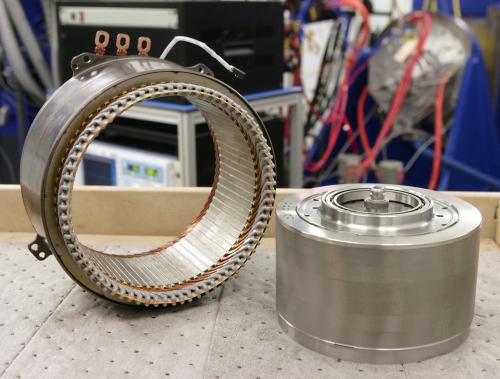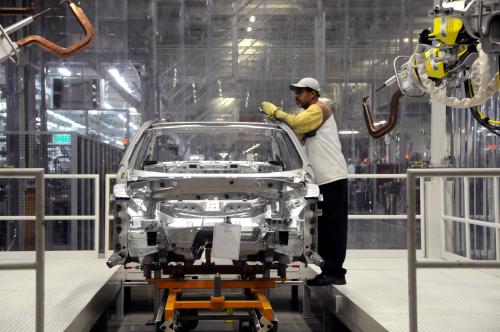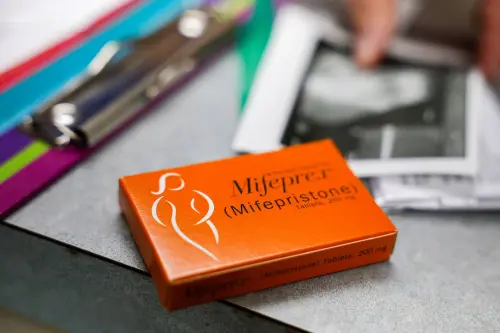Hubs and clusters, institutes and ecosystems: In recent years, we and others have talked a lot about the morphology of innovation systems, which are frequently anchored by major centers of research and comprised of related regional clouds of entrepreneurs, orbiting firms, industry actors, and educational institutions.
Strengthening that optimal structure was the idea behind our companion proposals for the creation of a network of regional energy discovery-innovation institutes and the establishment of a program to aid and abet nascent clusters with competitive grants. And it is also the point of the Department of Energy’s Energy Innovation Hubs program as well as the several regional innovation cluster programs now running, including at the Department of Commerce’s Economic Development Administration, that have moved along these lines.
Now, it’s great to see the Obama administration moving to pilot another proposed national network of innovation hubs aimed at catalyzing regional growth ecosystems, this time in manufacturing.
In this case, the news surrounds the launch last week of a robust new public-private institute for manufacturing innovation in Youngstown, OH, that will seek to provide a proof-of-concept for the creation of a $1 billion national network of up to 15 such institutes around the country. Focused on the hot new process of “3-D printing,” the new National Additive Manufacturing Innovation Institute (NAMII) will seek to bolster U.S. leadership on one of the critical Next Big Things in industrial production and will do it through an award of $30 million of federal funding that will be matched by $40 million from a winning consortium of 60 companies, universities, community colleges, and non-profit organizations arrayed around the Ohio-Pennsylvania-West Virginia “Tech Belt.” To that extent it’s reassuring to see concerted effort to strengthen the nation’s competitive advantage on advanced manufacturing through an embrace of regional hubs and ecosystems. There’s been an awful lot of dithering in recent years and it’s time to move forward on bolstering U.S. manufacturing!
And yet what’s equally gratifying is the intellectual sophistication of the administration’s innovation strategies, which have consistently sought to aid and abet local innovation by supporting regional, multi-party collaboration.
Turning to manufacturing, multiple agencies are again working in concert to implement carefully developed ideas about how government can accelerate industrial growth. Last month, most notably, the President’s Council of Advisors on Science and Technology (PCAST) provided strong grounding for the new push in a new report exploring how best to strengthen the nation’s advanced manufacturing sector. Along with solid ideas on securing the talent pipeline and improving the nation’s business climate PCAST carefully set out the rationale for the creation of a network of regionally focused manufacturing research centers such as our colleagues Howard Wial and Susan Helper set out last winter. Such centers, like the energy institutes, can act as powerful hubs of innovation by drawing university and national laboratory research into focused collaborations with firms, manufacturing supply chains, financiers, and the career-focused education provided by community colleges. Such centers can be particularly transformative by helping SMEs surmount the challenge of adapting to new product and process innovations, which in turn will bolster what Gary Pisano and Willy Shih have described as the “industrial commons.”
Yet beyond concentrated collaboration the regional focus of PCAST’s Manufacturing Innovation Institute model also affirms another central preoccupation of ours: the metropolitan nature of the nation’s economy.
Innovation and its deployment does not happen just anywhere. It happens in places, most notably, within metropolitan regions, where firms and workers tend to cluster in close geographic proximity, whether to tap local supplier networks, draw on local workers, or profit from formal and informal knowledge transfer. If properly channeled, these “co-location synergies,” as economist Greg Tassey has dubbed them, will ensure that value added through innovation spreads through and remains within the domestic manufacturing supply chain. Nor is this only a “soft” benefit. Such local synergies—accumulated region by region—can foster greater efficiency within and across manufacturing supply chains and add to the nation’s overall competiveness.
In sum, regional centers like the Manufacturing Innovation Institutes look like a very shrewd way to encourage collaboration on critical challenges, spur knowledge transfer, and help reinforce regional synergies for the nation’s benefit. Let’s launch some more of them!






Commentary
Hubs of Manufacturing: Let’s Get Started
August 20, 2012